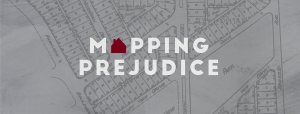What is Mapping Prejudice?

We are a team of geographers, historians, digital humanists and community activists seeking to expose structural racism in Minneapolis. We are building a map that shows how racial restrictions were embedded in the physical landscape of our community. We are unearthing racial covenants in Hennepin County property deeds, to reveal how much land was reserved for the exclusive use of white people for most of the twentieth century.
During the twentieth century, racially-restrictive deeds were a ubiquitous part of real estate transactions. Covenants were embedded in property deeds all over the country to keep people who were not white from buying or even occupying land; their popularity has been well documented in St. Louis; Seattle; Chicago; Hartford, Connecticut; Kansas City and Washington D.C.
Though covenants were everywhere, they did mutate over space and time. Those authored in the first years of the twentieth century have a different flavor than those recorded after World War II. The racial preoccupations of developers in Washington state were different from those of North Carolina. But all of these documents were blunt. For example, one common Minneapolis covenant reads: "the said premises shall not at any time be sold, conveyed, leased, or sublet, or occupied by any person or persons who are not full bloods of the so-called Caucasian or White race."
In Minneapolis, the first racially-restrictive deed appeared in 1910, when Henry and Leonora Scott sold a property on 35th Avenue South to Nels Anderson. The deed conveyed in that transaction contained what would become a common restriction, stipulating that the "premises shall not at any time be conveyed, mortgaged or leased to any person or persons of Chinese, Japanese, Moorish, Turkish, Negro, Mongolian or African blood or descent."
